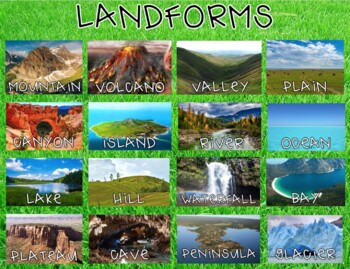Earth/Space ActivInspire Unit III Review "Landforms, Weathering & Erosion"
- Flipchart File
Description
Flipchart interactive review of the unit on "Landforms, Weathering & Erosion" (Unit III). The review contains 20 questions true/false; multiple choice and text and/or numeric responses. A PDF student worksheet/study guide can also be generated by using this program.
* All PowerPoint lessons; ActivInspire programs; student note sheets/activities and assessments for this unit can be found under the "Earth/Space Complete Unit III Landforms, Weathering and Erosion " zip file folder.
Terms/concepts in the unit include:
landforms, plains, coastal plains, Great Plains, Interior plains, erosion, soils, river deposition, plateaus, Colorado Plateau, Grand Canyon, Colorado River, folded mountains, Appalachians, Sideling Hill, upwarped mountains, Adirondacks, Southern Rocky Mountains, Matterhorn, fault-block mountains, Grand Tetons, volcanic mountains, Mauna Loa, Mauna Kea, Mt. Everest, weathering, Rocky Mountains, mechanical weathering, physical weathering, ice wedging, frost wedging, pothole formation, chemical weathering, surface water, groundwater, carbonic acid, clay, oxidation, rust, climate, climate effects, marble, granite, soils, soil formation, organic soils, humus, soil profile, A, B and C soil horizons, weathering, bedrock, parent rock, litter, soil types, erosional forces, slump, slide, creep, mass movement, rock slides, avalanche, slope instability, glaciers, glacial till, glacial landforms, Great Lakes, Chesapeake Bay, Ice age, deposition, runoff, channels, rilles, gullies, rill and gully erosion, sheet erosion, stream erosion, topsoil, erosion damage, wind erosion, Dust Bowl, drainage basin, Mississippi watershed, stream development, flooding, meander, dams, levees, catastrophic floods, Scablands, delta, fan, Mississippi delta
astronomydad


